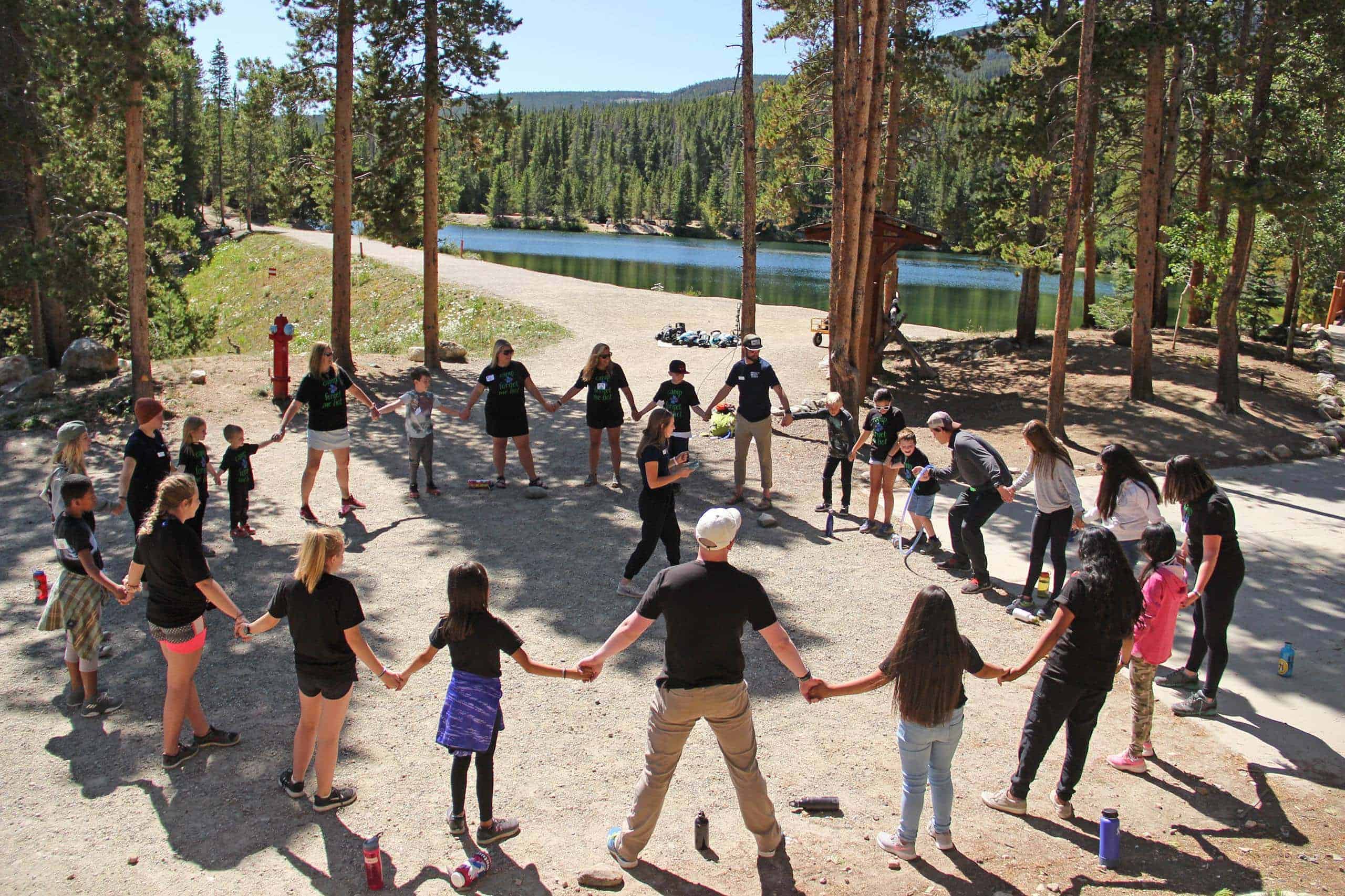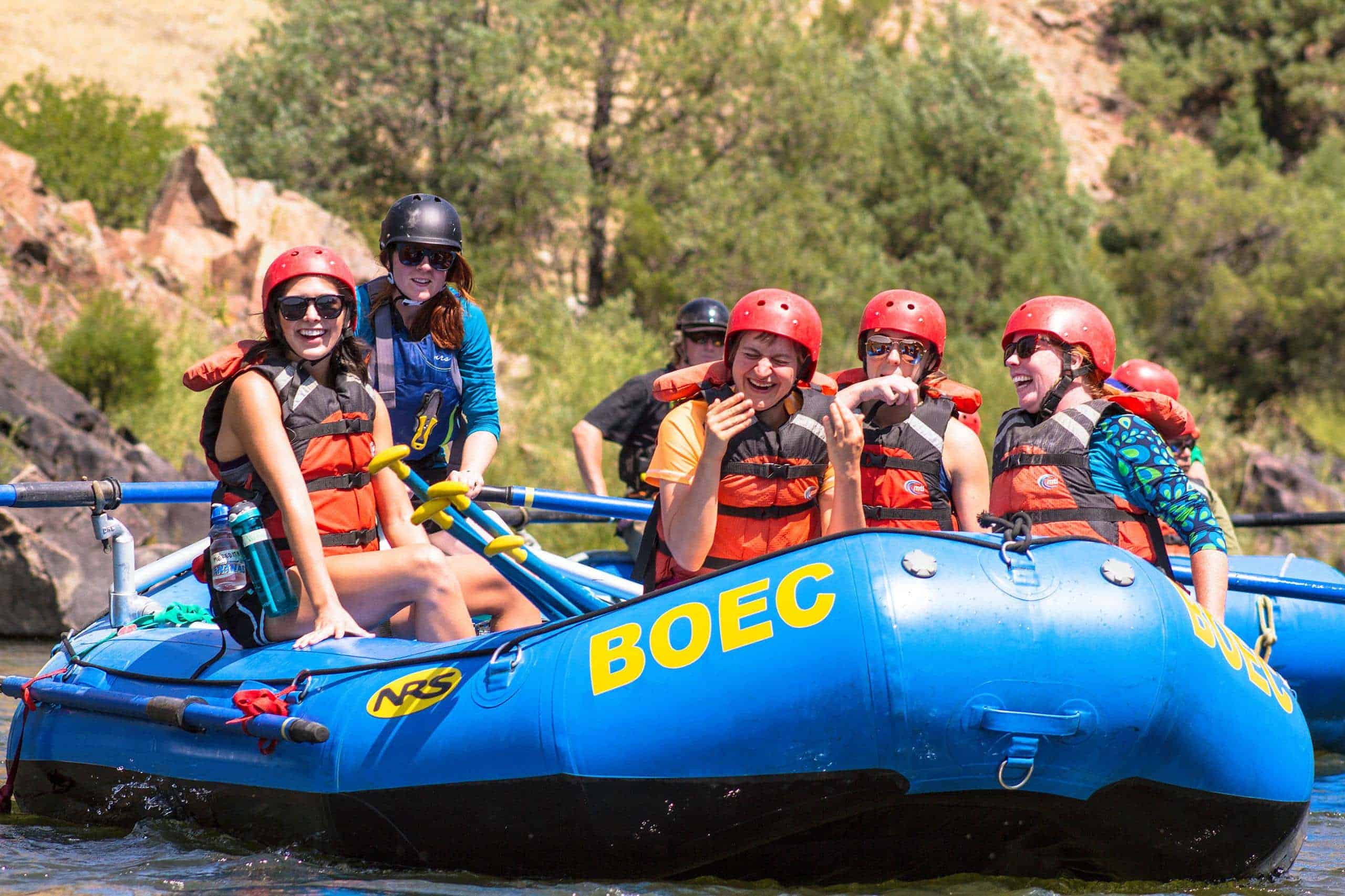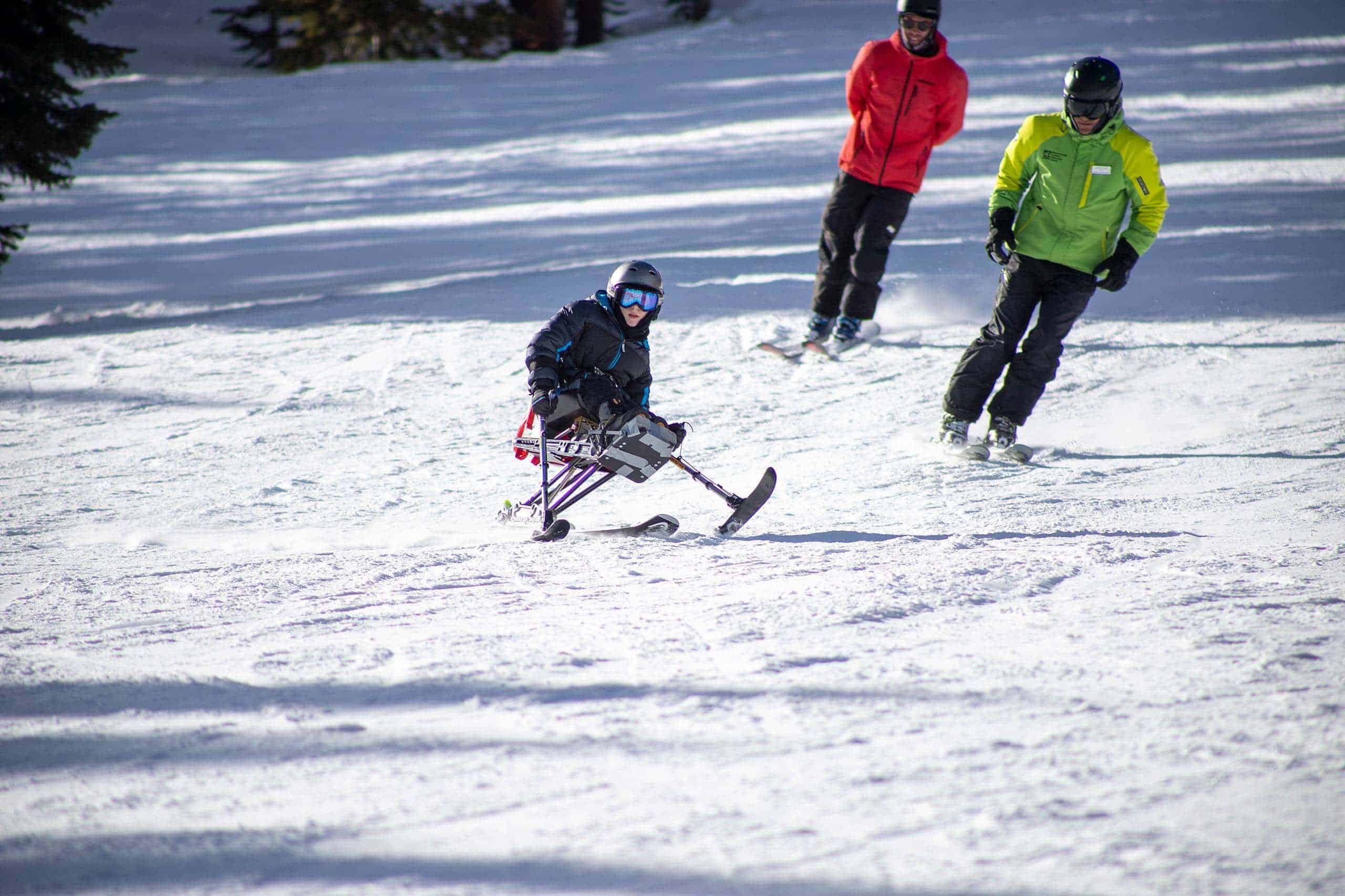The Continental Divide Trail (CDT) unites us. From Gateway Community residents to thru-travelers, and everyone in between, our diverse community is connected by our mission to protect the CDT. We are showcasing stories of the people and places that make up our community with our series, Voices of the CDT. Each month, look out for new stories that highlight these diverse experiences, histories, and faces, against the backdrop of the awe-inspiring Continental Divide.
INTERESTED IN SHARING YOUR CONNECTION TO THESE LANDSCAPES? SEND US YOUR STORY AT [email protected] FOR A CHANCE TO BE FEATURED!
Breckenridge Outdoor Education Center
Providing adaptive sports programs to individuals from all 50 states and 10 countries.

“The BOEC shatters what you think you can do and replaces it with the understanding that you will be able to participate and not in a way that’s limiting. In fact, it’s usually liberating” – Marshall W, an Adaptive Ski Participant.
The Breckenridge Outdoor Education Center, an educational non-profit, provides access to outdoor activities for people of all abilities, which helps to give a sense of freedom to some who aren’t always included in outdoor spaces. BOEC leads outdoor adventures to facilitate a space for people to learn new skills and form new connections with the beautiful landscapes of Colorado’s Rocky Mountains and beyond.
Their mission is to “expand the potential of people with disabilities or special needs through meaningful, educational and inspiring outdoor experiences” (Direct quote from BOEC website). Meaning that they try to facilitate opportunities for people with disabilities to connect with outdoor activities and learn new skills.
“The BOEC shatters what you think you can do and replaces it with the understanding that you will be able to participate and not in a way that’s limiting. In fact, it’s usually liberating,” said Marshall W, an adaptive ski participant.
BOEC was started by a former employee of an outdoor adventure program called Outward Bound in the 70s. BOEC began with a volunteer team, rustled-up gear, and a dream to provide all people with opportunities to adventure in the outdoors. In the beginning, they had programs such as cross-country skiing and adaptive ski-sleds. Eventually, they ventured into whitewater rafting, downhill skiing, and other programs ranging from a “Heroic Women’s Military River Trip” on the Colorado River to adaptive snowboarding programs.
“I just tell people how wonderful [BOEC] is!” said Peggy Manchester, a participant and donor who is living with MS.
CDTC spoke with Jaime Overmyer, the BOEC Wilderness Program Director.
Overview
BOEC has three main programs. The wilderness program runs year-round. They also have a ski/snowboarding program and an internship program. BOEC serves close to 3,000 different students between the summer and the winter programs. They have a full-time year-round staff of 11 people along with about 25 ski instructors, 25 paid wilderness instructors, and around 25 interns who are split between the summer and winter programs. They also have around 300 dedicated volunteers who help to keep the programs running smoothly. The majority of the people they serve are living with disabilities. One of the main components of BOEC is that they want everyone to have a chance at new opportunities.
What makes the BOEC special
BOEC has an amazing, dedicated and creative staff who take joy and pride in their work and find solutions in new and innovative ways. The attitudes of the students are also incredible. They often express so much joy to even be at BOEC that the staff can’t help but be infected by it. Along with this, a lot of the people and groups that come to BOEC have been going there for over 20 years, which serves to deepen the connection and trust that exists between all members of the BOEC family.
The staff aims to operate with compassion and empathy and to tailor each individual student’s experience to be the very best it can be. No one person is the same and BOEC tries to form connections that help them understand what each student needs from them. Every course they run is custom-made to adhere to the goals, hopes, dreams of students,while honoring the play and leisure recreation that all their participants want. This program is the definition of experiential education.
“This river trip was life inspiring. What I mean by that is, it showed me that as a retired soldier with severe PTSD and a TBI along with multiple internal injuries, I am not that different than my peers. It showed me I can actually do the things I did before I was injured. It showed me that there are others out there with a similar story that I can relate to, and that their way of recovering from certain events that I can relate to might work for me too,” said Mike F, a wounded veteran who participated in a Summer Veterans Program.

Memorable Moments
Jaime started as a summer intern and now is the director of the program, so it’s safe to say she has a lot of memories. Her favorite experience was with a participant who had a TBI (traumatic brain injury) who came to a camp. Jaime initially found it difficult to understand the participant, because her speech was affected by her injury. Jaime was nervous about how to best meet her needs, having never worked with a person with a TBI before. When they were paired together at the camp, Jamie was worried that everything was going horribly wrong at the beginning when they had difficulty communicating. However, they ended up forming a great bond and had an amazing time together. Jaime later found out that the participant was messing with her by speaking in french half the time, because she knew Jaime was nervous and wanted to play a joke on her.
Jaime’s other greatest memories are of the huge sense of shared compassion between the students and the facilitators. The mutual understanding that everyone is trying and learning together creates a special feeling that is hard to find anywhere else.
Connection to the Continental Divide Landscape
The landscape and the people in it make what BOEC does possible.
Just being in the landscape is so therapeutic, says Overmeyer. No matter where someone is in their process or recovery, this is an amazing place to be. The BOEC is lucky enough to have 35 acres in Breckenridge, Colorado with an old reservoir that has an accessible trail. The Rocky Mountain landscape provides students with a “breath of fresh air, literally and metaphorically.” The water resources of the area are also essential because they provide a medium that is very adaptable for folks.
The greater community in the landscape has a huge impact on their work as well. They have worked with the Forest Service and Friends of Dillon ranger district to make the trails in the area more wheelchair-friendly. Additionally, Colorado School of Mines (located in CDTC’s hometown of Golden, CO) has a lab called the Human Centered Design Studio that has helped to create something resembling a backcountry rickshaw that increases a trail’s accessibility while mitigating potential impacts on the trails and surrounding environment. The community helps people of varying abilities find tools to make the world work for them.
This landscape and the people in it make what BOEC does possible.
Growth of the Organization

As with every organization, there have been growing pains. They started out with a little adaptive program using skis and sleds that would never be used nowadays. Since then they have grown exponentially over the years.
The developments in technology in the last 45 have been amazing and have helped them advance a lot, but they also have an understanding that technology isn’t always the answer – but ingenuity and human connection can be. Jaime says that sometimes all they need is a pool noodle and duct tape to create a solution and provide an unforgettable experience.
Future Goals
COVID-19 provided BOEC with a proverbial deep breath and time to reset. They doubled down on their commitment to one-on-one programming. It allowed them to reflect on the fact that while growth is great, they want to make sure they stay true to the personalized, careful, and compassionate soul of the program. The deep breath that the COVID-19 pandemic provided also allowed them to sort through gear and improve it. Additionally, BOEC was able to see the need to find grants to improve on the programming they have, without having to lay off any full-time staff during the pandemic.
Suggestions for Supporters
The best way to be involved is to start with BOEC.org. There you will find a volunteer tab, an internship tab, and many options to sign up to be a participant. BOEC has a wide variety of different interns. They’ve had anyone from a traditional 22-year-old college grad to a 65-year-old who wants to find a fulfilling new adventure.
Final Thoughts
Jaime wants to highlight the wonderful community that BOEC and its participants surrounded by. They were only able to survive the last 45 years, and the pandemic especially, because of community fundraising and grants. Overmeyer says it is really wonderful to have people involved and supporting them through community.
To learn more about BOEC, volunteer opportunities, or to sign up for an adaptive program please visit their website.

